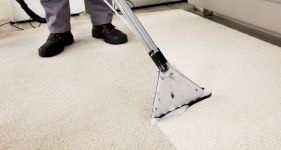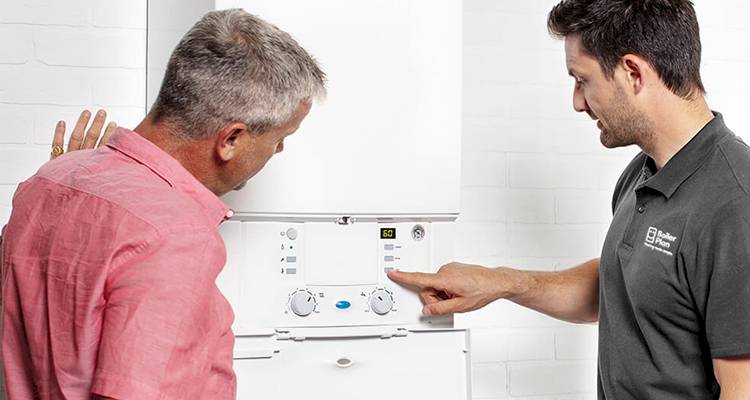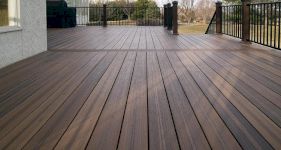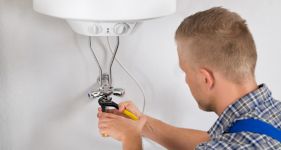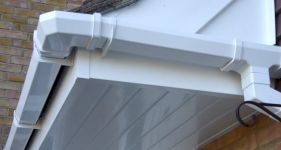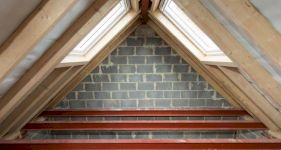Cavity Wall Insulation Cost
- The average cost of cavity wall insulation is around £2,500.
- This job typically takes less than a day to finish.
- How much cavity wall insulation costs to get installed and what impacts house insulation costs you're quoted.
- A general overview of what's involved in cavity wall insulation and expert advice from tradespeople on MyJobQuote.
- How to find and hire local cavity wall insulation installers in the UK.
How much does cavity wall insulation cost in 2025?
In this guide, we provide a detailed breakdown of what the typical cost of cavity wall insulation is for different-sized homes in the UK, as well as prices for different types of cavity insulation (like cavity wall insulation injection).
Ready to get a quote from a cavity wall installer?
More than 1 million homeowners across the UK use MyJobQuote to find tradespeople near them every year.
And it couldn't be easier.
Submit a few basic details about what you're looking for and we'll connect you with cavity wall insulation installers near you. They'll provide free, no obligation quotes for this job.
Want a few more details about cavity wall insulation costs first?
We've got you covered! Check out the full guide below.
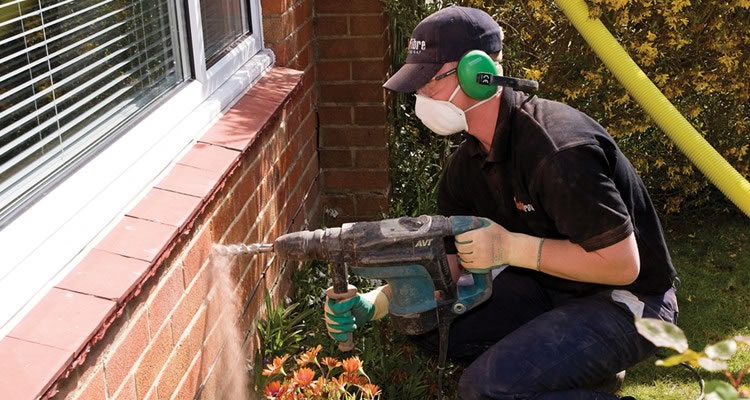
£2,500
Table of Contents
- How Much Does Cavity Wall Insulation Cost?
- Labour Cost to Install Cavity Wall Insulation
- Supply Cost of Cavity Wall Insulation
- Additional Cavity Wall Insulation Costs
- Factors That Impact Cavity Wall Insulation Costs
- What Is Cavity Wall Insulation?
- How Cavity Wall Insulation is Installed
- Building Regulations & Planning Permissions Needed for Cavity Wall Insulation
- Cavity Wall Insulation Benefits
- Types of Cavity Wall Insulation
- Grants and Help With Costs (ECO Schemes)
- How Cavity Wall Insulation Works
- How Much Can You Save on Energy Bills With Cavity Wall Insulation?
- How Long Does Cavity Wall Insulation Last?
- Cavity Wall Insulation Removal Cost
- Checklist: Hiring a Cavity Wall Insulation Installer
- FAQs
How Much Does Cavity Wall Insulation Cost?
The main factor affecting cavity wall insulation cost is the size and type of your home, as a larger wall area requires more materials and labour. Location and access can also influence the total price.
For a mid-terrace home, you can expect costs of £1,000 to £1,800. For a semi-detached house, the costs rise to £2,000 to £3,000. A large detached home will cost around £3,000 to £5,000.
What’s your biggest concern about cavity wall insulation?
If you have a fixed budget, then you should look into cavity wall insulation grants. These are available to some homeowners through energy suppliers. The grants can cover some or all of the cost to lay cavity wall insulation.
How beneficial to energy efficiency would cavity wall insulation be? Does it offer any other advantages, aside from keeping my home warmer for less?
Cavity Wall Insulation Prices
These are the average cavity wall insulation costs in 2025. They assume that there is no existing insulation to be removed and that the job is relatively straightforward.
| House Type | Average Cost |
|---|---|
| Mid Floor Flat | £1,000 – £1,200 |
| Terraced | £1,200 – £1,800 |
| Semi-detached | £2,000 – £2,500 |
| Detached Bungalow | £2,500 – £3,000 |
| Detached | £3,000 – £5,000 |
These prices include both materials and labour. The exact cost will depend on the size of your home, the type of insulation used, and any additional work required.
Labour Cost to Install Cavity Wall Insulation
Labour makes up a large part of cavity wall insulation costs, and prices vary depending on property type, access, and region.
Installing cavity wall insulation usually takes 4 to 8 hours depending on the property size and access. The following costs and duration are based on a basic installation (labour only), plus if any additional preparation work of surveys are required, this can also impact the end figure.
| House Type | Duration | Average Cost |
|---|---|---|
| Mid Floor Flat | 1 – 2 hours | £50 – £100 |
| Detached Bungalow | 3 – 4 hours | £150 – £200 |
| Terraced | 2 – 3 hours | £100 – £150 |
| Semi-detached | 2 – 3 hours | £100 – £150 |
| Detached | 3 – 4 hours | £150 – £200 |
Supply Cost of Cavity Wall Insulation
The type of insulation material you choose affects both the overall cost and the thermal performance.
Most installers quote on a per-square-metre basis, with the following table indicating average starting prices. Larger homes will naturally be more expensive, due to the amount of insulation required.
| Material type | Average cost per m² |
|---|---|
| Mineral wool (fibreglass or rock wool) | £15–£20 |
| EPS beads (expanded polystyrene) | £20–£25 |
| Polyurethane (PUR) foam | £22–£30 |
Material Supply Prices
With the above in mind, the most cost-effective option remains mineral wool, while PUR foam sits at the top end of the scale. However, EPS beads are a popular mid-range choice, offering good thermal performance with straightforward installation.
For a typical semi-detached home, total material only costs usually fall between £750 and £2,250, depending on the insulation type selected, as EPS and PUR foam may work out slightly higher.
By comparison, for a larger detached home, material only costs can range from around £1,125 and £3,000, with foam insulation pushing costs to the higher end of the scale.
Additional Cavity Wall Insulation Costs
In some cases, additional costs may apply when installing cavity wall insulation. You might also want to consider other energy-saving upgrades at the same time.
Getting a Survey
Some installers charge separately for a cavity wall survey. If you go ahead with the installation, this fee is usually deducted. Surveys typically cost around £100–£250.
For a more detailed assessment, a heat loss survey using thermal imaging may also be recommended. These usually cost £200–£500, depending on property size.
Replacement Wall Ties
Wall ties connect the two layers of brick in a cavity wall. If they’re failing, cracks may appear in the mortar. Installers will check this before work begins and if anything needs repairing, this should be actioned prior to adding the insulation. The cost for replacing wall ties will depend on the surface area covered, although budgeting around £1,000–£2,000 is a reasonable estimate. Costs may be higher for extensive repairs or larger properties.
Hard-to-Treat Cavities
Debris or existing insulation can make installation more complex. Costs vary: a simple clearance might add £150–£300, depending on the size of property, while more extensive work could add up to £1,500 or more.
Other Energy-Saving Upgrades
- Loft insulation — typically costs £500–£1,500 and can save £115–£215 per year.
- New windows — around £4,000–£7,000 for a whole house, or £80–£120 per pane to replace blown glass.
- New front door — around £1,000 on average, with uPVC from £300–£600 and composite doors up to £2,500.
- Draught proofing — simple but effective, at around £200.
Removal of Old Insulation
If your cavity walls already contain insulation that has failed or become damp, it will need to be removed before new material can be installed. This process is more labour-intensive and specialist equipment is required. As with many related tasks, the removal and disposal of old insulation can depend on the size of property, ranging anywhere from around £300-£2,500.
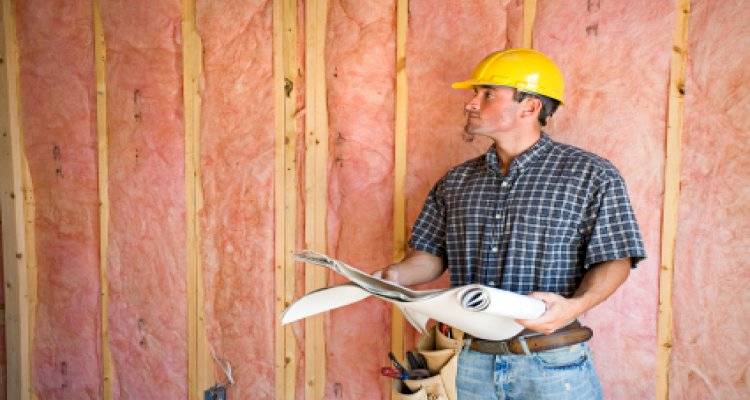
Factors That Impact Cavity Wall Insulation Costs
The average cost of cavity wall insulation depends on two main factors.
The first is the area that needs filling. Prices depend primarily on the total wall area — the more external walls your home has, the higher the cost will be.
The second factor is the type of insulation material chosen. The most expensive options are PUR foam (£25–£35 per m²) and sheep’s wool (£28–£40 per m²).
At the lower end of the scale, mineral fibre (£15–£20 per m²) and cavity wall boards (£18–£25 per m²) are more affordable choices.
On average, materials account for around 30–40% of the total project cost, with labour making up the remainder.
What Is Cavity Wall Insulation?
Cavity wall insulation is used to reduce heat loss by filling the gap between the inner and outer walls, preventing warm air inside from escaping.
How Cavity Wall Insulation is Installed
Cavity wall insulation is usually completed in a single day by trained installers. The work can be divided into three clear stages.
Before Installation
- Survey and checks: The installer inspects the property, checks wall exposure, and confirms that the cavity is suitable for insulation.
During Installation
- Drill holes: Small holes (about 22mm) are drilled in the mortar joints at regular intervals.
- Inject insulation: Insulation material is pumped or injected into the cavity through these holes using specialist equipment.
After Installation
- Make good: The drill holes are refilled with matching mortar to blend into the brickwork.
- Guarantee: A certificate is issued, usually covering the installation for 25 years (e.g., CIGA guarantee).

Following the work, you may also receive a visit from an inspector. They may need to check that the work was completed to a good standard.
Should I Have Cavity Wall Insulation?
For a small number of properties, it is not always appropriate to have cavity wall insulation, even if the cavity is suitable. This is because, in the wrong conditions, cavity wall insulation can lead to damp issues in a home.
The problem may only affect one of your walls, but you should speak to your installer if you have any concerns.
The factors to be aware of are:
- Homes that are exposed to severe wind-driven rain (usually along the West coast of the UK).
- Homes that are unsheltered by other houses or trees.
- Homes with external walls in poor condition.
If more than one of these is true for your home, then make sure to seek advice about having cavity wall insulation fitted.
Building Regulations & Planning Permissions Needed for Cavity Wall Insulation
As long as your home is not a listed building or in a conservation area, there is no need to seek planning permission to install cavity wall insulation. This is especially true if the work isn't likely to alter the exterior appearance of the building, in which case planning permission is unlikely to be required.
If you are unsure whether planning permissions apply to your property, then it is best to check any queries with your local planning authority (LPA).
However, cavity wall insulation must comply with certain building regulations, as it has an impact on your home's energy performance.
The majority of tradesmen who are able to install cavity wall insulation will be able to self-certify their work - particularly those registered with TrustMark or the Cavity Insulation Guarantee Agency (CIGA). They will also be able to handle any building regulation notifications on your behalf, although it is your responsibility to ensure they are able to do so.
Is Rockwool thermal stone wool cavity wall insulation any good? We're thinking of using this on our small extension.
Cavity Wall Insulation Benefits
Adding cavity wall insulation brings a range of benefits for household running costs, comfort, and sustainability.
Reduces Energy Bills
Without insulation, homes lose significant heat through external walls, making central heating work harder. Filling the cavity reduces this heat loss and lowers energy use.
Depending on the property type, cavity wall insulation can save between £110 and £480 per year on heating bills in 2025.
Keeps Property Warmer
Some homes feel chilly even with the heating on. Cavity wall insulation helps retain heat inside, creating a more stable indoor temperature and making the property easier to keep warm in colder months.
Reduces Carbon Footprint
Lower heating demand means less fuel is burned. This reduces household carbon emissions, so as well as cutting bills, cavity wall insulation helps reduce environmental impact.
Increases Property Value
Most homebuyers expect good insulation as standard. By installing cavity wall insulation, you make your home more attractive to future buyers.
Well-insulated properties are often valued higher than similar homes without insulation, helping to protect or even increase resale value.
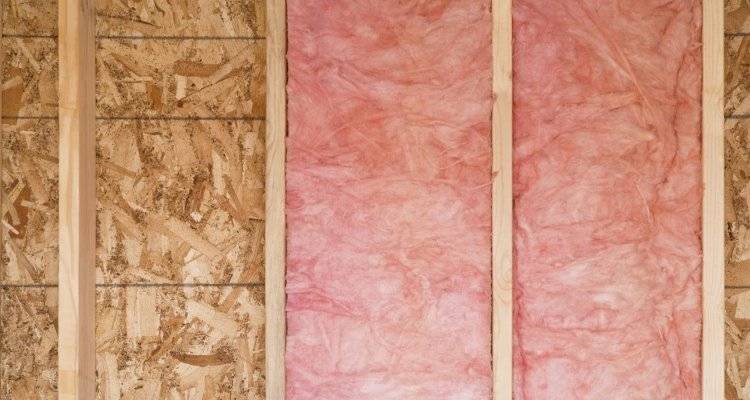
Types of Cavity Wall Insulation
Mineral Wool
Mineral wool (fibreglass or rock wool) is made from molten rock spun into fibres and blown into the cavity using specialist equipment. The average cost is £15–£20 per m².
- ✔ Easy to install
- ✔ Good thermal and sound insulation
- ✔ Resistant to rot
- ✖ Less environmentally friendly than natural alternatives
EPS Beads (Expanded Polystyrene)
Polystyrene beads or granules are injected into the cavity, where they bond together. They typically cost £20–£25 per m².
- ✔ Excellent thermal performance
- ✔ Lightweight and quick to install
- ✔ Moisture resistant
- ✖ Less effective at sound insulation
Rigid Insulation Boards
Insulation boards (e.g., PIR or polystyrene) are usually fitted during construction, as they are difficult to retrofit. The average cost is £18–£25 per m².
- ✔ High thermal performance
- ✔ Cost-effective option for new builds
- ✖ Not suitable for most retrofit projects
Foam Insulation
Foam insulation is injected into the cavity, where it expands to fill gaps and create an airtight seal. It provides superior thermal resistance but is more expensive than other types.
Polyurethane (PUR) Foam
PUR spray foam expands as it sets, filling cracks and spaces in the cavity. However, it cannot be recycled and is not environmentally friendly. The average cost is £25–£35 per m².
- ✔ Very high thermal performance
- ✔ Seals gaps effectively
- ✖ Expensive compared with other types
- ✖ Some mortgage lenders are cautious about properties with spray foam
Urea-Formaldehyde Foam
This foam was widely used in the past but is no longer recommended. It shrinks over time and can release formaldehyde gas, which is toxic. If your home contains this type of insulation, it should be professionally removed and replaced.
Grants and Help With Costs (ECO Schemes)
Some homeowners may qualify for free or subsidised cavity wall insulation through the Energy Company Obligation (ECO) scheme. Most major suppliers, including British Gas, EDF Energy, E.ON, Npower, Scottish Power, and SSE, take part.
How to Apply
- Check with your supplier: Contact your energy supplier and ask about ECO or “affordable warmth” grants.
- Confirm eligibility: You may qualify if you receive certain benefits or if your home would achieve significant energy savings from insulation.
- Book a survey: If eligible, an installer will carry out a free property survey before any work begins.
If you do not qualify for a full grant, you may still receive partial support, especially if your property is considered “hard to treat.” Free loft insulation is sometimes available through the same scheme.
Learn more about ECO grants on the official Ofgem website.
How Cavity Wall Insulation Works
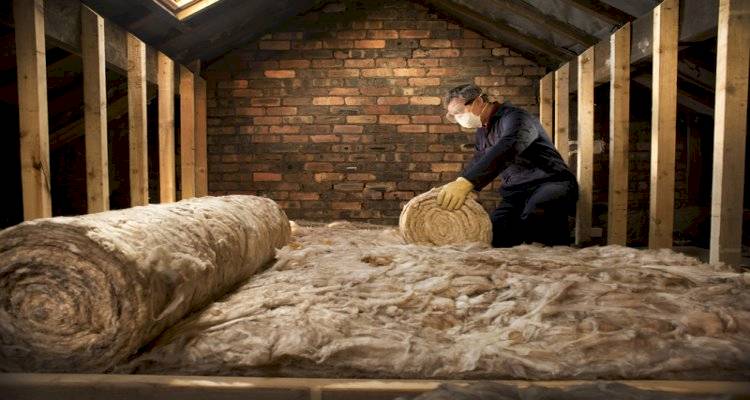
Cavity wall insulation reduces heat loss by filling the gap between the inner and outer walls of your home. Once the cavity is filled, warm air stays inside for longer and cold air is kept out, improving comfort and reducing energy bills.
- Injection or pumping — Installers drill small holes in the mortar joints and use specialist equipment to blow or pump insulation material into the cavity.
- Even coverage — The material expands or settles to fill every part of the cavity, creating a continuous layer of insulation.
- Sealed finish — The drill holes are filled in afterwards, leaving the wall looking almost unchanged from the outside.
It works by reducing convection currents inside the cavity. The insulation traps air, slowing the movement of heat through the walls.
How Much Can You Save on Energy Bills With Cavity Wall Insulation?
Up to one third of a home’s heat is lost through the walls. Installing cavity wall insulation is one of the simplest and most cost-effective ways to reduce this loss and cut energy bills.
Savings vary by property type. For a terraced home, cavity wall insulation can save between £110 to £180 per year. In a detached home, heating bills can drop by as much as £300 to £480 per year.
| House type | Annual saving |
|---|---|
| Mid-terrace house | £110–£180 |
| Semi-detached house | £180–£285 |
| Detached house | £300–£480 |
Payback Time Examples
Homeowners often ask how long it takes for cavity wall insulation to pay for itself through energy savings. The payback period depends on the property type, the insulation used, and energy prices.
- Mid-terrace home — Costs about £1,200 to £1,800 to install, with annual savings of £110–£180. Payback in roughly 7 to 14 years.
- Semi-detached home — Around £2,000 to £2,500 to install, with annual savings of £180–£285. Payback in roughly 8 to 13 years.
- Detached home — Around £3,000 to £5,000 to install, with annual savings of £300–£480. Payback in roughly 7 to 12 years.
These estimates reflect typical 2025 energy prices and usage. Actual savings vary depending on factors like heating habits, existing wall condition, insulation material, and local climate. Since cavity wall insulation often lasts 25–30 years, most homeowners will see a net saving over the lifetime of the installation.
How Long Does Cavity Wall Insulation Last?
Cavity wall insulation is designed to be a long-term improvement. Once installed, it normally lasts for the lifetime of the building with little to no maintenance required.
Most installations in the UK are covered by a 25-year guarantee from the Cavity Insulation Guarantee Agency (CIGA), giving homeowners added peace of mind.
Over time, some types of insulation may settle slightly, but this usually does not significantly affect performance. Regular checks by a qualified professional can help ensure the insulation remains effective.
Cavity Wall Insulation Removal Cost
There are a small number of instances where cavity wall insulation removal is necessary.
For instance, this could be when the insulation has failed or is allowing damp into your home. Additionally, older insulation materials, such as wall insulation foam made from urea-formaldehyde, should be removed for health reasons, as they release potentially harmful chemicals over time.
Removing Urea Formaldehyde Foam
If you have urea-formaldehyde foam in your walls, then finding a contractor who is willing to remove it can be difficult. To remove the urea-formaldehyde insulation, it must be broken down into dust.
This dust is then vacuumed out of the cavity. This can take some time. The whole house must be secured so that none of the dust gets into your home. This means all ventilation routes must be sealed, and the whole job must be carried out with care.
Homeowners may need to vacate the property during the process. This can make the cost of removing cavity wall insulation quite expensive, with prices varying depending on the property size and complexity of the job.
Removing Other Types of Insulation
Other forms of insulation, such as polystyrene beads or mineral wool, are generally easier to remove than older foams. The process involves taking out bricks at the base of the wall and extracting the insulation using specialist equipment.
While not especially complex, it is time-consuming. The average cost of removing cavity wall insulation is around £25–£35 per m², or typically £250–£350 for an average-sized home.
Professional contractors often use cavity wall extraction machines, which speed up the process and help ensure the cavity is cleared effectively. This leaves the wall ready for new insulation to be installed if required.
Checklist: Hiring a Cavity Wall Insulation Installer
When comparing quotes for cavity wall insulation, it helps to check that installers meet recognised industry standards and provide appropriate guarantees.
Here are some points to consider:
- Installers should be members of the National Insulation Association (NIA), the Cavity Wall Insulation Guarantee Agency (CIGA), or the British Board of Agrément (BBA)
- Ask whether the installer follows a professional code of practice.
- Find out if their work is eligible for the 25-year guarantee offered by CIGA.
- Check their MyJobQuote profile to find reviews from homeowners who've used them in the past.




